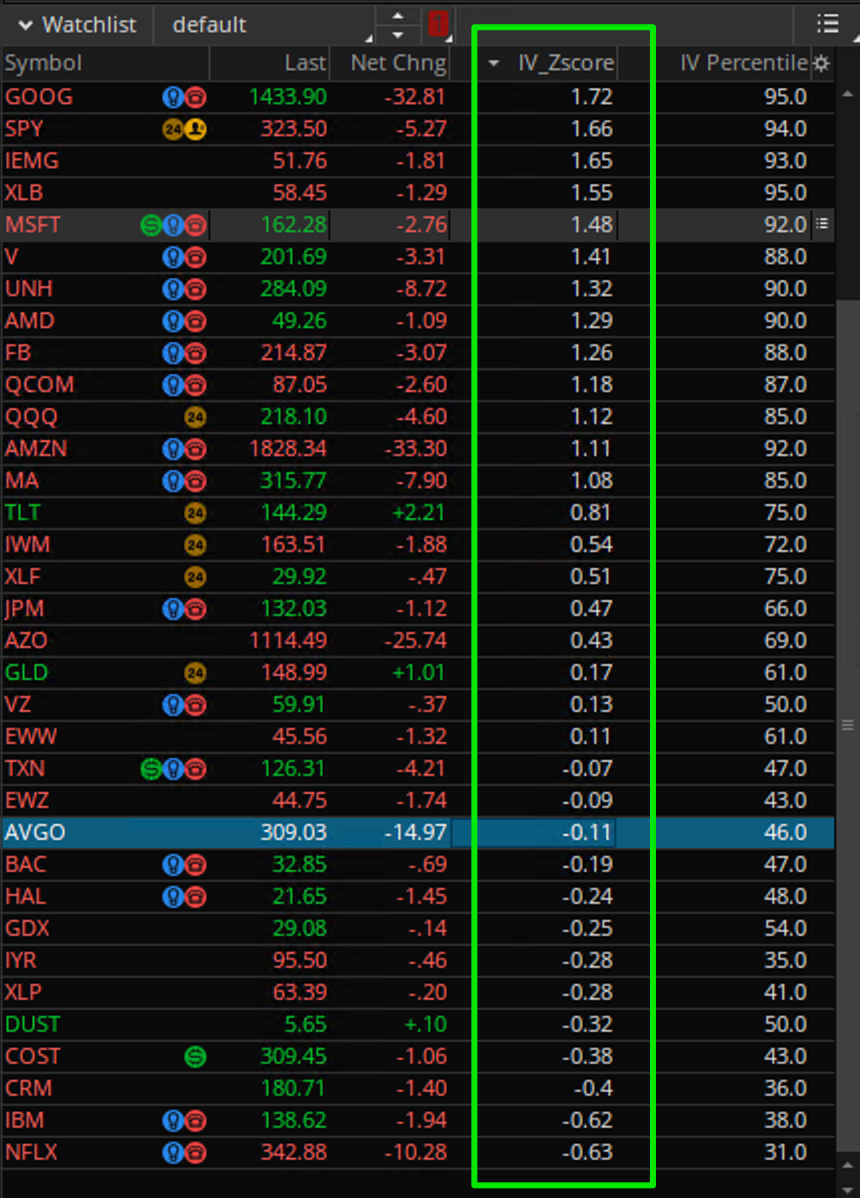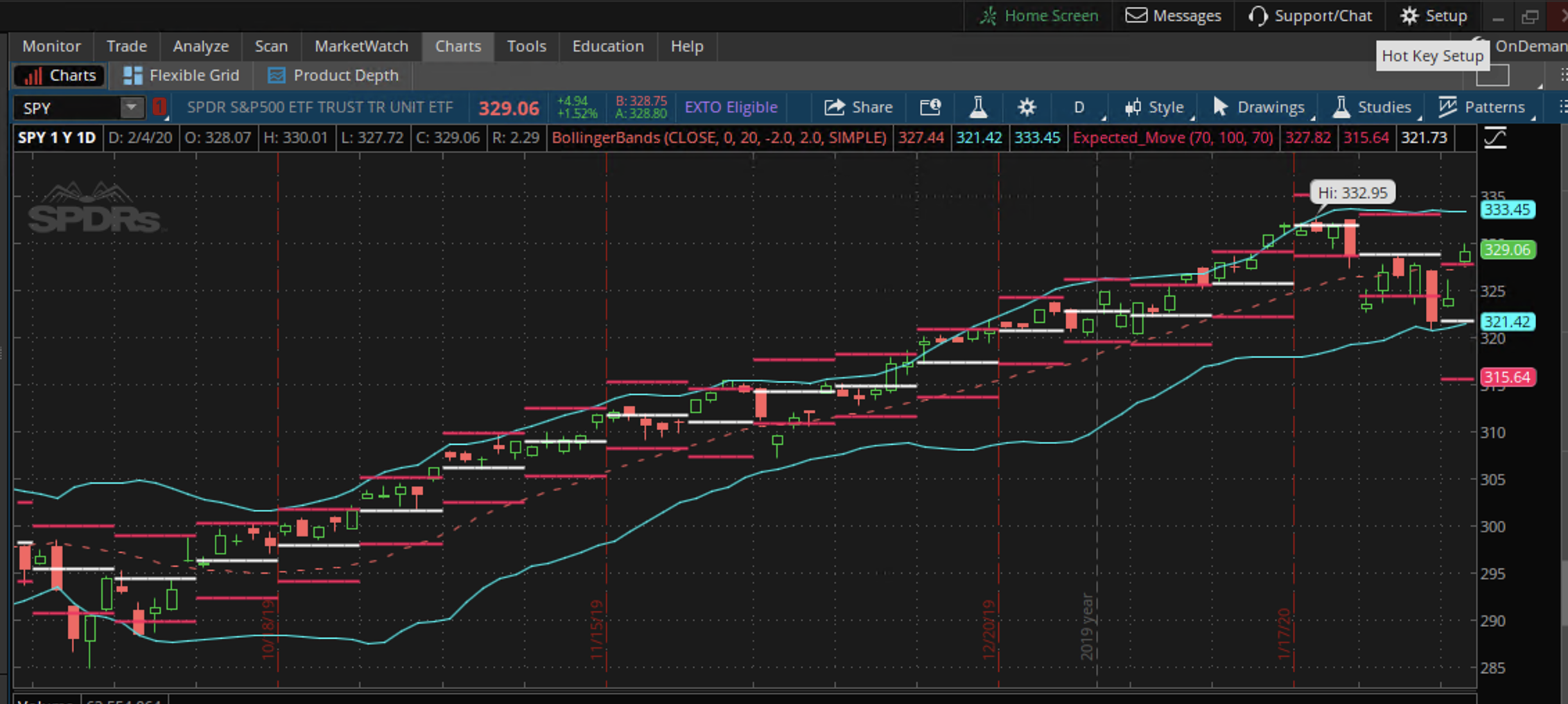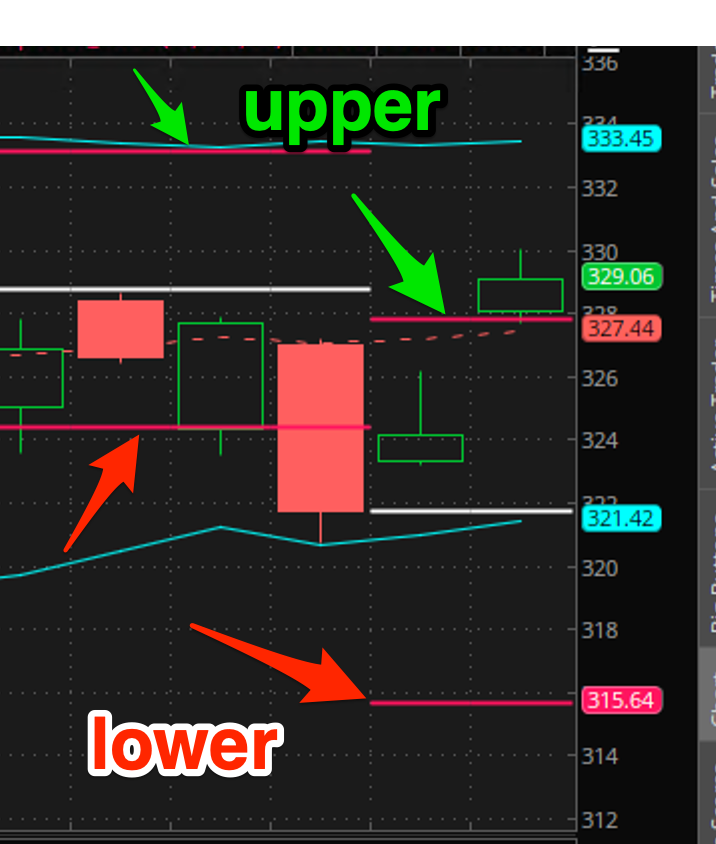Here you can find all of our Think Or Swim scripts we use in our Unlimited classes and training sessions.
- Expected move
The IV Z-Score
The implied volatility Z-score is a way of framing implied volatility in context. For example, today SPY closed down -1.56%, which is a lot. But how abnormal is it? We don't know unless we're able to put it in context.
The current VIX is around 17, putting it well above the long run average of 14.7. So how do we measure how abnormal a value of 17 is?
That's what Z-scores do.
This is discussed in the options intro course. Using IV Percentile or implied volatility percentile can be confusing as it differs between the TOS platform and the Tasty Trade platform. The IV Z-score uses the tried and true method of using a Z-Score to measure volatility.
Quick And Dirty Z-Score Refresher
If you're new to Z-Scores, and have no idea what they mean, don't be scared. Z-scores are super simple.
A Z-Score measures anything, rain levels, the number of people using out houses at Burning Man per hour.. and the implied volatility of our favorite stocks. It works by measuring 1) everything relative to the mean or average and 2) measuring how far something is from the mean in standard deviations.
Sounds geeky? Once you use it, I'm confident you'll be semi-pro with it in 5 minutes.
For example, let's say we're measuring how many people are using our favorite port-o-potty at Burning Man and discover on average it's 30 people per hour.

At peak times, it's up to 55 and during lulls at dawn, it's only 5 people per hour. We do a bunch of number crunching and determine:
The mean number of people using the port-o-potty is 30 people per hour with a standard deviation of +/- 10 people per hour.
The formula for computing a Z-score is super simple.

After we have our mean and the standard deviation, we can measure our data and give it Z-scores.
So if we stand there for five hours are count how many people per hour are using the port-o-potty, we can put the data in a Z-score context. After counting the people using our favorite bathroom away from home for five hours, our data looks like this.
Hour | People Using Port-O-Potty | Port-O-Potty Z Score. |
|---|---|---|
4-5 AM | 13 | -1.7 |
5-6 AM | 19 | -1.1 |
6-7 AM | 30 | 0.0 |
7-8 AM | 32 | 0.1 |
8-9 AM | 40 | 1.0 |
If we pick the first row, 13, we get a Z-Score of:
(13 - 30)/10 = -1.7
The Z-Score gives us context to our data. If we look at our 8-9am slot, we can see there are 40 people using our favorite desert throne. Is that a lot or a little? With a Z-score of 1.0, we can see that 40 people using it is a lot.
Likewise, at 4-5 AM, we see we have 13 people using the port-o-potty with a Z-score or -1.7. That tells us that is abnormally low. For a Z-score, a normal range is 0 +/- 1.0. Anything above or below that is abnormal.
The IV Z-Score In Action
Enough with port-o-potties... Let's talk stocks. Here we can see a current snap shot of the IV Z-Score next to the IV Percentile indicator in the TOS Watchlist.

The IV Z-Score of around 0 means the implied volatility is about average, such as EWW in the chart above.
SPY, which sold off 1.5% today, has an IV Z-Score of 1.66, which means it 1.66 standard deviations above the mean. It's really high with VIX running at 17. That's abnormally high, it's only this high on about 6% of all trading days.
NFLX on the other hand, which just had earnings a few days ago, has a really low IV Z-Score of -.63. If we're looking to put trades on in NFLX, we generally want trades that benefit from the IV rising, since it's very likely to rise being -.63 below the mean.
The IV Z-Score is a guide for telling us what types of trades to put on right now as it relates to implied volatility. Implied Volatility is mean reverting and trading with it puts the wind at our back.
Likewise, if we're looking for longer term trades in GOOG which has an IV Z-Score in the nose bleed section of 1.72, we want to be mindful of trades that benefit from IV collapsing.
How to install the TOS IV Z-Score Indicator



